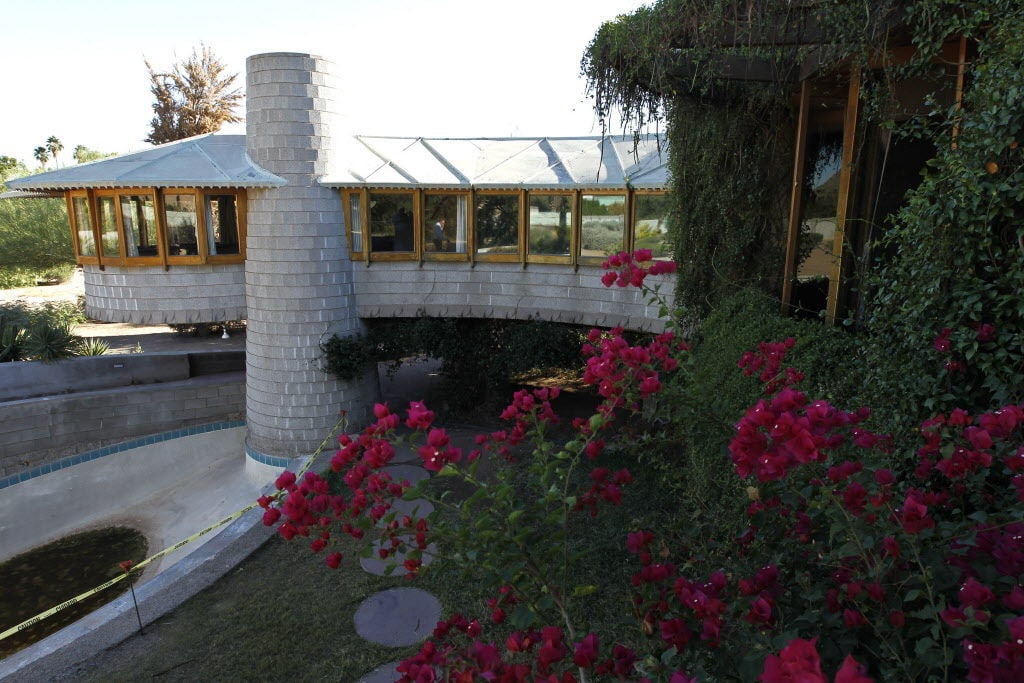PHOENIX — Early plans for a Frank Lloyd Wright-designed house in the Arcadia neighborhood envision the home as a visitors’ destination, including a shaded garden and underground education center for tours, performances and weddings.
Site maps and a list of property uses submitted to the city are the first official look at how the owner of the the David and Gladys Wright House intends to open it to the public. The documents were filed as the first of many steps to seek a special permit allowing the uses in a residential area.
Frank Lloyd Wright designed the house for his son and daughter-in-law, with construction completed in 1952.
The home is known for its spiral design and views of Camelback Mountain. But after the couple died, the house was sold without historic protection.
Former homebuilder Zach Rawling purchased the home in 2012 when it was threatened by demolition from a developer.
The Phoenix City Council then approved a change to the city’s zoning ordinance that allows properties with historic landmark designation to seek a special permit to open to the public.
Rawling started the David and Gladys Wright House Foundation to eventually maintain the property and open it for tours and other events. The home currently acts as a private residence.
Uses for the house would include paid public tours, performances, education programs, exhibitions and up to 12 weddings per year, according to the filing. An artist in residence or other guests could stay overnight.
After restoring the house, two new phases of construction are proposed to add visitor space. The site covers 6.7 acres, including an easement.
The first phase would add a shade structure on the property north of the house, reaching 30 feet to the top of the roof from the existing grade. Other additions would include a terraced garden and reflecting pool.
The second phase would add an underground educational center up to 25,000 net square feet. It would include classrooms, a multipurpose area, a gift shop and a cafe serving beer and wine. Landscaped pedestrian paths would connect the house to the other areas of the property.
Plans for the site, shared less formally for months during tours of the house and other presentations, have divided neighborhood residents, community members and city leaders who disagree over what types of uses should be allowed on the property.
Supporters say opening the Wright House to the public celebrates Frank Lloyd Wright’s legacy while opponents fear commercialization of the surrounding residential neighborhood.





